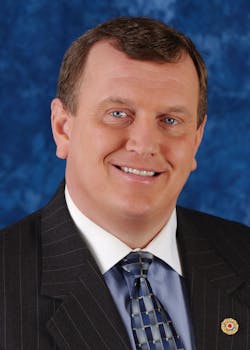The ability to call for a mayday is a trapped firefighter’s most valuable lifeline. Mission-critical voice capability is the single most important aspect of emergency communications.
Our industry has long bemoaned deficiencies within communications systems that prevent effective internal fireground communications. In far too many cities and towns, there are “dead spots” where firefighters operating within a structure, below grade or in remote areas cannot communicate with other operating units, outside command or dispatch.
Beginning with the 1982 Air Florida Flight 90 crash on Washington’s 14th Street bridge in which responding units from the District of Columbia, northern Virginia and various federal agencies were unable to communicate with each other, a hue and cry was sounded to address the issue of interoperability.
Harrowing reports from 9/11 about FDNY firefighters in the Twin Towers not being able to hear warnings of the potential collapse from police helicopters and the inability of the hundreds of agencies operating on the Gulf Coast after Katrina to communicate fueled the fire to improve interoperability. In fact, one of the recommendations of the 9/11 Commission was to develop a national interoperable communications system for first responders.
The fire service had already been united and aggressively lobbying for interoperability for many years.
It is critical to understand that the fundamental focus was to provide interoperability for MISSION-CRITICAL VOICE COMMUNICATIONS.
Understanding FirstNet
With the passage of the Middle Class Tax and Employment Act of 2012, we won an important, but incomplete, victory. Congress provided a segment of spectrum width known as D Block and $7 billion to build out a network.
Sounds pretty good, right? And, it is. But, here’s the rest of the story.
To build and manage the network, Congress created a quasi-governmental enterprise within the Department of Commerce—the First Responder Network Authority (FirstNet).
FirstNet is trying hard to succeed, but it faces many obstacles. The $7 billion is woefully inadequate to build a national network. For example, Verizon spent more than $40 billion to build its network, which is just a commercial platform that isn’t hardened or reinforced to support public safety communications.
The technology utilized by FirstNet is called Long Term Evolution (LTE). Currently, LTE can only support data, not voice communications for public safety. This was confirmed by a GAO Report (12-343) that concluded that it will be many years before FirstNet can support mission-critical voice.
Everyone in the fire service needs to understand that FirstNet is a DATA-ONLY network, at least for the foreseeable future. The GAO report continued: “This is a broadband network that would supplement, rather than replace, current public safety communications.”
The impact on you
So, when planning your capital budgets for communications, understand that your jurisdiction will need to allocate funds to support your existing mission-critical voice systems AND, if desired, budget for FirstNet’s data network.
FirstNet is a commercial enterprise that will be competing against other vendors for the data business. To be competitive, FirstNet may need to lease some of its spectrum space to non-public safety customers and establish a “priority access protocol” to ensure that first responders have preference in emergencies. Originally, the fire service envisioned a network that was run by public safety, exclusively for public safety. Regrettably, that is not what we have.
The trade-off for D Block and the $7 billion was a provision in the law that requires 11 of the largest metropolitan areas to forfeit their spectrum, known as T-Band, which actually supports mission-critical voice, by 2023. More than 700 jurisdictions may be impacted by the forfeiture. It is estimated that the direct and indirect costs of moving to other frequencies will exceed $10 billion, with state and local governments stuck with most of the tab.
Astonishingly, New York, Boston, Chicago, Los Angeles and Philadelphia do not even have adequate spectrum space available to allow a transition.
Two realities
FirstNet may well provide a stellar interoperable data network that is a valuable adjunct to your overall communications system. However, we know two undisputable and disturbing realities. Unless the law changes or a technological miracle occurs, FirstNet will NOT be able to provide mission-critical voice capabilities for many years, if ever, and the existing, effective and reliable mission-critical voice capabilities of hundreds of jurisdictions operating on T-Band are in peril.
Now you know the rest of the story.

Kevin O’Connor
KEVIN O’CONNOR is the founder and principal of O’Connor CARES, Inc., an advocacy and consulting firm for organizations in the emergency response, homeland security, communications and public health space. He formerly headed Governmental Affairs and Public Policy for the IAFF. O’Connor served as past chair of the Congressional Fire Service Institute. He began his career as a firefighter/EMT in the Baltimore County Fire Department and was the 2010 recipient of the Motorola/CFSI Mason Langford Award for Lifetime Achievement in the Fire Service.






